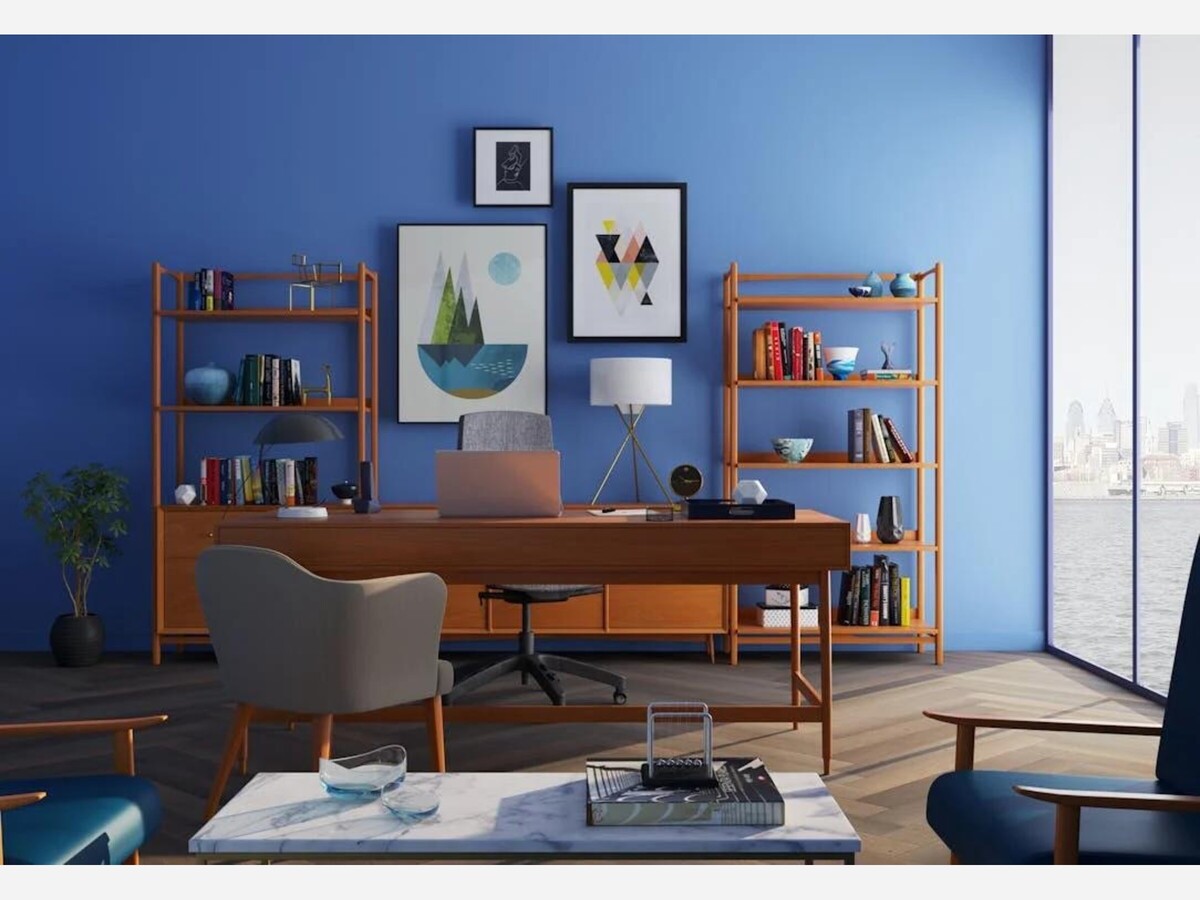Image


Photo by Pexels
by Ellie Watkins*
For entrepreneurs working from home, the lines between personal space and professional presence are a constant dance. You're hosting client calls one moment and deep-diving into projects the next. And while coffee shops and coworking spots once offered a change of scenery, the evolution of hybrid work has made the home office not just an option—but a cornerstone of your brand. The real challenge? Designing a space that feels secure enough for sensitive client meetings while still delivering the efficiency and ease you need to run a business virtually.
Separate the Signal from the Noise
You can't control every ambient hiccup, but you can engineer the environment. When you’re on a call with a potential investor or high-value client, the last thing you want is for their trust to erode every time your dog barks or your neighbor revs a motorcycle. A smart entrepreneur knows to carve out a space—preferably a separate room—with solid doors and, if needed, additional insulation. Acoustic panels, thick rugs, and even fabric-covered furniture go a long way in deadening unwanted sound. The goal is to make your voice the only one heard—crisp, direct, and unbothered by the chaos outside your bubble.
Lighting Sets the Mood—and the Message
You might not think about your light switches until they stop working—but in a home office where every hour counts, a single electrical hiccup can short-circuit your entire workflow. That’s why investing in a home electrical warranty isn't just practical, it's strategic. With coverage for interior electrical lines and components, you’ll have a safety net for hard-wired issues like faulty wiring, broken outlets, or unpredictable switch failures that can grind productivity to a halt. It’s not glamorous, but having that kind of backup means fewer disruptions, quicker fixes, and more time doing what actually moves your business forward.
Your Backdrop Is Your Brand
People are watching more than your face during virtual meetings—they’re scanning your background for clues about your legitimacy. Don’t give them a reason to question your professionalism. You don’t need designer furniture or an Instagrammable bookshelf, but you do need intention. Keep it clean, add subtle personal touches, and most importantly, make sure it doesn’t distract. If you can swing it, invest in a camera that allows for focal blur—so even if your kid leaves a toy on a shelf, your audience stays focused on you.
Privacy Isn't Optional—It's Strategy
Too many entrepreneurs treat privacy like a tech setting, not a design principle. But when client trust and legal responsibility hang in the balance, your space needs to hold the line. Start with secure access: use a locked door if others are home, and make sure your Wi-Fi is password-protected with enterprise-level encryption. Store physical files in a lockable cabinet, and keep sensitive paperwork off-camera. Virtual security matters too—install a VPN, use two-factor authentication on all apps, and train yourself to double-check screen sharing before any meeting. You’re not being paranoid. You’re being prepared.
Furniture That Works Harder Than You Do
It’s tempting to cobble together a workspace from whatever’s lying around. But your back, shoulders, and business will all thank you for better. A supportive chair isn’t a luxury—it’s essential infrastructure. Same goes for your desk; it should offer enough surface area to work without feeling cluttered. Adjustable-height desks are a worthy upgrade, letting you shift between sitting and standing to fight fatigue. Remember, you’re not furnishing a room. You’re building a command center—one that supports you through 10-hour stretches and 5-minute standups alike.
Tech That Doesn’t Trip You Up
Nothing torpedoes credibility faster than glitchy audio or lagging video. You’re not just working remotely—you’re performing. A good microphone and noise-canceling headphones can change how you're perceived immediately. Wired internet, wherever possible, trumps Wi-Fi for stability. Dual monitors boost productivity for tasks like reviewing documents during a call, and a secondary webcam can be a clutch move for product demos or whiteboard sessions. Test every element before showtime. Because when tech works right, no one notices it. And that’s the sweet spot.
Design for Flow, Not Just Looks
You’re not decorating; you’re choreographing. The best home offices aren’t just beautiful—they’re intuitive. That means putting everything in reach while staying organized: notebooks, chargers, pens, coffee. Use cable organizers to keep your space tidy and avoid last-minute fumbles. Designate zones if you can—one for calls, one for deep work, one for quick tasks. Build in micro-routines, like a light you turn on when you’re “on the clock.” These patterns create mental boundaries, helping you shift gears faster and stay in control, even when your day goes sideways.
Entrepreneurship thrives in spaces that support focus, trust, and flexibility. Your home office isn’t just a corner with Wi-Fi; it’s the front-facing extension of your business. The way it functions—and how it feels—affects everything from your posture to your partnerships.
* Ellie Watkins Ellie loves collaborating with her best friend Haley on fun DIY projects, so they decided to take that collaboration a step further by creating their site, Ladieslovediy.com.